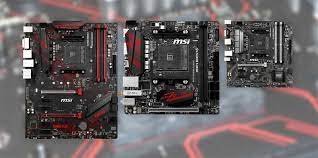ATX and Micro ATX are form factors of desktops. They define the specific nature of the dimension, the power and supply requirements, the connector / peripherals and the type of connector of the computer system. It mainly concerns the configuration of the motherboard, the power supply unit, and the chassis of the computer system. Let’s start ATX Vs Micro ATX:
ATX:-
ATX is a specification standard for motherboards created by Intel Corporation in 1995 as an ATX standard. ATX stands for Advanced Technology. This was the first major change made to the hardware configuration of desktop computers.
The specification defines the mechanical dimensions, mounting points, power / input interfaces of the input board and connects the motherboard, power supply and chassis. With the new specs, replacement has been introduced in many components of the hardware, in desktops.
Size:-
ATX full size board is measured as 12 inches 9.96 inches (305mm × 244mm). The ATX standard introduced the ability to use a separate part of the system for extensions and extensions for the motherboard, and is often called an I/O board, which is the panel at the back of the chassis and is used to connect devices. The configuration of the I/O board is determined by the manufacturer, but the standard makes it easier to access that did not exist in the earlier AT configuration.
Connectors:-
ATX also introduced PS2 mini DIN connectors for connecting keyboards and mouse to motherboards. A 25-pin parallel port and RS-232 serial port were the dominant form of peripheral connectors on the early ATX boards. Later, the Universal Serial Bus (USB) connectors replaced the above connectors. Ethernet, FireWire, eSATA, audio ports (analog and S / PDIF), video (D-sub analog, DVI, HDMI) are also installed in the newer versions of ATX motherboards.
Micro ATX:-
Micro ATX is a standard introduced in 1997 according to ATX specifications. It is also called uATX, mATX, or μATX. The main difference of a device comes from the dimensions of the computer system. The maximum size of an ATX micro motherboard is 244mm × 244mm.
Micro ATX can be considered a derivative of the ATX standard. Mounting points are identical; therefore allows micro ATX motherboards to be compatible with the chassis of a standard ATX system board. The main I / O board and the electrical connectors are the same, and make it possible to switch between peripherals and devices. Standard TA ATX PSU can be used in mATX system without any problem. They also use the same chipset configuration, but the size specified in the standard limits the number of expansion slots available.
ATX Vs Micro ATX:-
• ATX is a hardware specification (motherboard) of desktops introduced by Intel Corporation in 1995 as an introduction to the existing AT specification.
• Micro ATX is a hardware specification based on the ATX standard specification; therefore, it is compatible with the peripherals and plug-in devices used for ATX computers. Power supply, I / O board and connectors are the same.
• Micro ATX is smaller than the standard ATX configuration. It has fewer expansion slots and fan drivers than a standard ATX.











